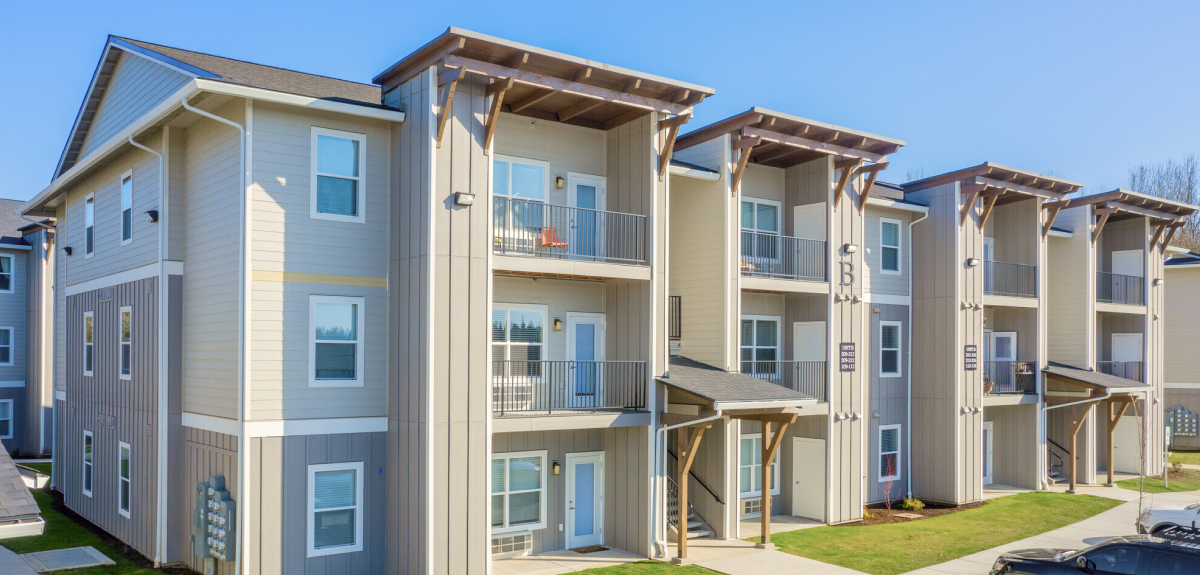Published on June 2nd, 2025
By Brittany Benz
Although the multifamily property management industry has been transformed over the last several years, one element of operations has stayed the same for the majority of multifamily operators: the roles and organizational structures of on-property teams.
While the traditional onsite team model can still be highly effective and productive, it often generates various operational inefficiencies. Common issues include duplicate and/or overlapping roles or the creation of completely different processes across multiple properties within the same multifamily residential portfolio.
Because operational efficiency is a top challenge for multifamily property management companies, it makes sense that many are starting to explore how centralizing teams and resources can alleviate pain points such as:
- Freeing teams from labor-intensive processes.
- Reducing maintenance costs.
- Ensuring smooth handoffs in multi-step processes.
- Effectively keeping track of projects and vendors.
- Making faster data-driven decisions.
For some multifamily asset management teams, centralization can be a business-changing solution. Keep reading to explore the advantages and challenges of centralization for your multifamily portfolio and business, especially when switching from a traditional management model.
What Centralization Looks Like for Multifamily Property Management
For single-family rental property management teams, centralization is already a common structure, since having onsite teams isn’t possible. Furthermore, managed units aren’t always close to one another, even when they’re in the same metro region and area.
Because centralization is often naturally built in at the property level, multifamily property management companies haven’t necessarily needed to look at a bigger, organization-wide centralization picture. However, persistent industry and economic stressors — including staffing shortages, softening rent rates, sky-high inflation rates, and increased business costs — have put multifamily operational efficiency to the test.
As many multifamily asset management companies are starting to realize, centralization can be brought up a level within the organization. By shifting staff from property-specific roles to portfolio-specific functions, your teams can work more holistically across the portfolio.
This shift also means multifamily management team members will likely:
- Relocate from being on-property to a centralized “home office” location, which may include remote work locations.
- Narrow their focus into specialized roles and deeper work rather than performing a variety of simple tasks.
- Work from one connected technology solution and follow one set of standardized processes.
At first glance, multifamily property management centralization can look like a guaranteed way to solve operational inefficiencies. However, it’s important to understand the benefits and challenges of centralization before making the switch.
The Benefits of Centralization: A Critical Component of Multifamily Property Management Solutions
When solving multifamily’s most pressing operational challenges, centralization plays a vital role. It can help optimize for efficiency, improve resident and owner satisfaction, and provide greater visibility across an entire portfolio, regardless of size and complexity:
- Specialized roles allow teams to focus: Instead of having team members wear multiple different hats throughout the day, centralized teams can narrow roles down to what they enjoy and do best. Because multitasking involves high levels of context switching — when a person’s attention and focus switches back and forth between unrelated or disconnected tasks — centralization can reduce stress on team members and help prevent burnout. To show just how much this can impact your entire multifamily property management business, a recent workplace study revealed that nearly half (42%) of all employees use five or more work apps per day, with 12% saying they use seven apps or more daily. This adds up to hours of lost time each week, and contributes significantly to digital exhaustion.
- Self-service options empower residents and owners: Because dedicated multifamily property management teams aren’t onsite anymore, it will be essential to introduce accessible self-service tools for residents and owners. However, this investment is highly beneficial for a number of reasons. For example, robust technology systems can help maintain open lines of communication and prevent service gaps when onsite teams are centralized. In addition, self-service tools empower residents and owners to take action and feel connected, reducing the chances of things falling through the cracks.
- Multifamily property management companies can do more with less: By pooling resources at the organization level instead of replicating roles, processes, and tools at the property level, multifamily housing management companies gain the ability to leverage economies of scale. This strengthens negotiating power with vendors and suppliers and can help reduce financial inefficiencies and spending redundancies. This is applicable every step of the way, from tenant onboarding and apartment leasing to ongoing multiple property maintenance.
- Business insights and performance visibility are easier to achieve: Instead of having to consolidate performances of many properties across a portfolio, everything becomes easier to define, measure, and analyze with centralization — especially if all information and teams are working on one connected platform.
Centralization Challenges for Multifamily Residential Managers To Keep in Mind
Although there are numerous benefits to centralization, it’s also critical to evaluate its unique challenges. While some difficulties may be fairly easy to solve with operational updates and shifts, others could be deal-breakers for some multifamily property management companies.
- Onsite teams may be slower to embrace a “nontraditional” and unfamiliar model: Even when organizational change is positive and can bring benefits, it can still be hard for teams to embrace. Because centralization differs from what many multifamily property management teams are used to, it will take time for everyone to adapt to the change. Honest, frequent, and transparent communication is key, since many team members may be wondering about job security and how the change could affect their livelihoods. If your multifamily organization chooses centralization, make sure to consistently reassure teams of how they will personally benefit, such as spending less time on tedious work, being able to streamline processes, and possibly working from home.
- Company culture must be strong before switching to centralization: To make any big transition successful, your company culture must be strong at its very core. If you are positive your multifamily leadership can maintain stability in your business and teams during the centralization shift, you also need to consider how that culture will evolve after centralization is in place; it will likely create new roles, alter dynamics between people and departments, and impact in-person connection time.
- Adopting the right multifamily property management solutions becomes critical: Utilizing fitting tools and technology are essential for effective and efficient workflows. Relying on outdated, disparate systems only exacerbates existing communication issues and workflow challenges. Moving to one centralized solution will be necessary to ensure centralization happens at every level and across every business function.
- Rethinking “personalized” service: To ensure residents continue to receive support, rethink what checking in and building relationships with them looks like from a centralized model perspective. Fortunately, there are still meaningful ways to deliver exceptional experiences in our digital age without always being face-to-face.
Bottom Line: Make the Best Move for Your Multifamily Residential Business
At the end of the day, only you will know if centralization is right for your business and teams. While many benefits can come from moving to a centralized operations system, making the actual switch should be done with care, detailed planning, and thorough and transparent communication at every step.
For additional insights into how your multifamily property management company can streamline operations, download our free guide below.










Comments by Brittany Benz